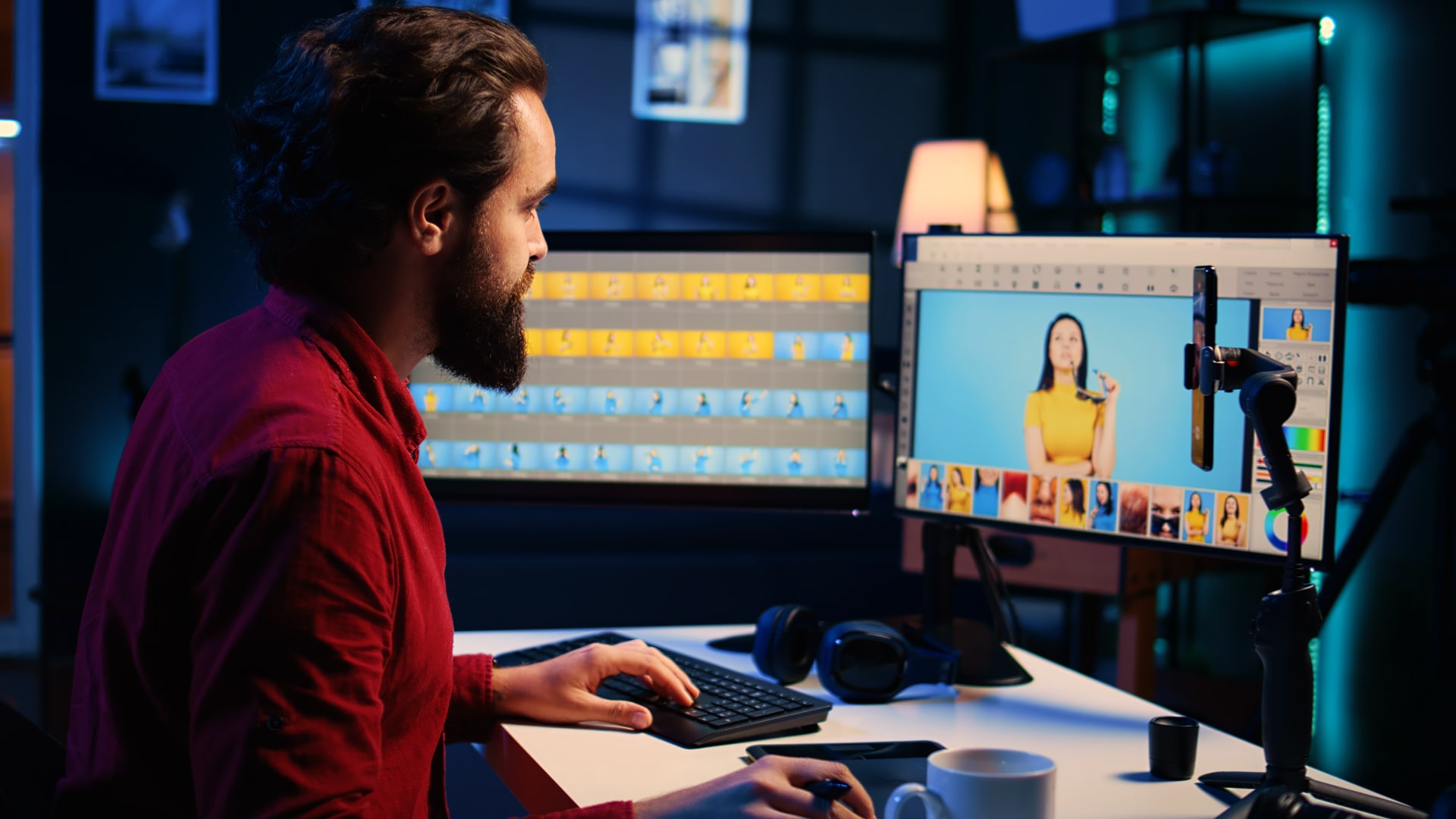
Influencers have long been social media trendsetters, shaping trends and influencing consumer behavior with engaging content, resulting in an industry valued at over $20 billion. However, the landscape is evolving with the emergence of AI influencers and virtual personalities powered by artificial intelligence.
These digital avatars are revolutionizing how brands connect with their audience, offering unparalleled engagement and brand promotion opportunities. Understanding the rise of AI influencers and their impact on the digital marketing landscape is crucial to cultivating a distinct brand identity and standing out from competitors.
An Introduction to AI Virtual Influencers
AI influencers, also known as virtual influencers, are essentially a type of AI-powered digital human—computer-generated personalities designed to engage with audiences on social media. Ranging from non-human characters to lifelike CGI humans, these virtual beings are crafted by 3D artists using advanced technology like motion capture and AI tools. To understand the differences between AI influencers and virtual influencers, and explore their key use cases, check out this detailed guide on AI Influencer vs Virtual Influencer: Key Differences and Use Cases.
Recent technological advancements have brought them into the mainstream, alongside the rise of social media and the metaverse concept, increasing their popularity.
Virtual influencers offer a novel way for brands to connect with consumers. They’re customizable to fit any desired persona, speak any language and are immune to aging or real-life scandals.
This flexibility makes them an attractive option for businesses looking to resonate with the audience’s interests and values without the limitations of real-world influencers.
Working with virtual influencers can be cost-effective for businesses compared to traditional influencers. While real influencers might demand hefty fees for sponsored content, virtual influencers often offer more reasonable rates.
Want to make your brand stand out in a fresh and exciting way? A virtual influencer could be the game-changer you’re looking for.
If you’re ready to create a digital character that connects with your audience, we’re here to help.
Get in touch today to start building a virtual influencer that truly speaks to your fans.
Learn more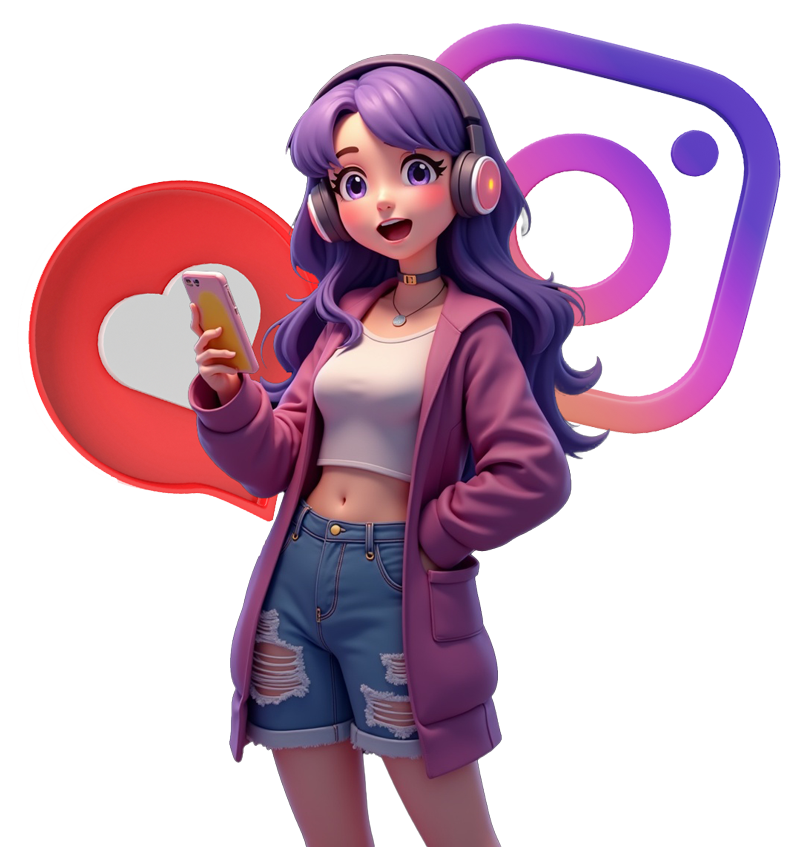
Major brands and celebrities have already embraced virtual influencers in their marketing campaigns. From supermodel Bella Hadid posing with Lil Miquela for Calvin Klein to Prada introducing a CGI ambassador for its perfume Candy, these digital personalities are increasingly integrated into the advertising landscape.
Type of AI Influencers
Virtual influencers come in various forms, each offering a unique avenue for engagement and interaction with your target audience.
Non-Human AI Influencers
A non-human AI influencer is a digital persona created using artificial intelligence technology, possessing characteristics and behaviors akin to a human influencer.
These virtual beings, such as Lu, the Brazilian sensation with over 25 million followers, are not real individuals but rather digital constructs designed to engage with audiences on social media platforms.
Unlike traditional human influencers, non-human AI influencers are not limited by physical limitations and can be customized to fit various brand personas and messaging strategies.

Animated Human AI Influencers
Animated human virtual influencers, on the other hand, introduce a touch of realism by presenting animated characters that resemble humans. These digital personas leverage advanced animation techniques to convey emotions, gestures, and expressions authentically.
By mirroring human behavior, these AI influencers bridge the gap between the digital world and real-life interactions, offering a compelling medium for brand communication. These virtual influencers establish genuine connections with your audience and drive engagement and brand loyalty through their relatable demeanor.
Kizuna AI is an example of the effectiveness of animated human AI virtual influencers in building strong connections with audiences. Through her engaging and personable interactions, she has amassed a large following, showcasing the potential impact of virtual influencers in brand communication.

We, at Dream Farm Agency, specialize in designing animated human AI influencers. Our expertise in crafting engaging and captivating characters ensures that your brand’s message is effectively conveyed across different platforms and audiences.
Don’t forget to check out our sample works to explore various virtual characters we’ve created and if you have any questions or inquiries, feel free to contact us.
Life-Like CGI Human Virtual Influencers
Lastly, life-like CGI human virtual influencers represent the pinnacle of technological innovation, blurring the lines between fiction and reality. These digital entities exhibit astonishing realism, with lifelike features, expressions, and movements that rival those of actual human beings.
Using cutting-edge CGI technology, life-like CGI human virtual influencers offer an unparalleled level of immersion and authenticity, captivating audiences with their convincing portrayal.
With their uncanny resemblance to real individuals, these virtual influencers evoke a sense of familiarity and trust, positioning your brand as a leader in innovation and creativity.
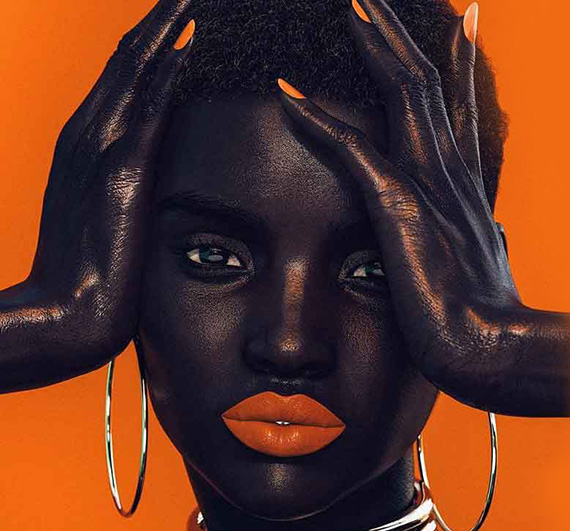
Each type of virtual influencer brings its own set of advantages and opportunities for brands looking to leverage AI technology in their marketing strategies.
Whether you opt for non-human, animated human, or life-like CGI human virtual influencers, you can use the power of these digital personas to engage your audience, drive brand awareness, and cultivate meaningful connections in the digital landscape.
Discover more examples of AI influencers and delve deeper into the world of virtual personas in our comprehensive article: Top 50 AI Virtual Influencers in 2024.
Advantages of AI Influencers
From their cost-effectiveness to unparalleled scalability, AI virtual influencers offer various advantages that can revolutionize how you connect with your audience. Below, you’ll explore how they can supercharge your brand’s online presence.
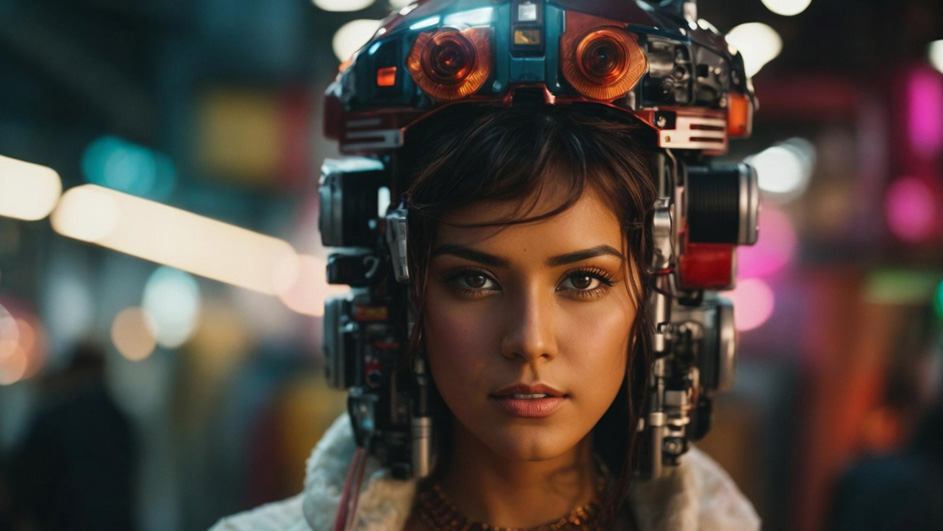
Cost-Effectiveness
When you’re thinking about how to stretch your marketing budget, AI influencers are a game-changer. You’re probably used to collaborations with traditional influencers. Those fees can strain your finances, especially if you’re a small business with limited resources.
Here’s where AI influencers come into play. They offer a much more cost-effective solution compared to their human counterparts. Once you’ve got your AI influencer up and running, you’ll find that they require minimal ongoing expenses.
That means no more worrying about draining your budget whenever you want to promote your brand. With AI influencers, you can get the word out about your products or services without breaking the bank.
It’s a smart investment that can help you maximize your marketing strategies while maintaining cost efficiency. So, if you’re looking for a budget-friendly way to boost your brand’s visibility, AI influencers could be just what you need.
Targeted Audience Reach
When seeking to interact with your target audience, precision is vital. Although traditional influencers might have a big following, it’s often a mixed bag of people with various interests and backgrounds.
That can make it challenging for you to modify your message in a way that resonates. But with AI influencers, it’s a whole different story. These digital beings are pros at delivering personalized content designed to address the unique preferences and interests of targeted demographic segments.
They analyze heaps of data to understand exactly what engages your audience, allowing them to craft messages that hit the mark every time. With their targeted approach, you can ensure that your message reaches the right people at the right time every time.
24/7 Availability
Unlike human influencers who have their limits, AI influencers are available for your audience in real-time and round the clock, no matter where they are in the world or at what time it is.
Whether answering customer questions, launching new product campaigns, or riding the wave of a trending topic, AI influencers have got you covered. With their constant stream of content and interaction opportunities, you can ensure that your brand stays front and center in your audience’s minds, day or night.
But it’s not just about being there when your audience needs you. It’s also about building trust and loyalty over time. With AI influencers, your followers can rely on consistent interactions and updates from their favorite virtual personalities. It leads to long-term retention and advocacy.
With their perpetual availability and unwavering dedication, they’ll support you in building stronger connections with your audience and driving brand visibility like never before.
No Human Limitations
AI virtual influencers don’t get tired. This means they can interact with your audience around the clock, 24/7, without missing a beat. Just imagine the possibilities.
While you’re catching some shut-eye or taking a well-deserved break, your AI influencer is hard at work, engaging with your audience, answering questions, and keeping the conversation going. It’s like having a dedicated marketing team that never sleeps.
And because they’re not bound by human limitations, you don’t have to worry about burnout or downtime. Thanks to AI influencers, even when you’re not actively engaged online, your brand can remain at the forefront of your audience’s thoughts, regardless of your online presence.
Scalability and Efficiency
AI virtual influencers can simultaneously reach thousands, even millions of followers, spreading your message far and wide with minimal effort. While traditional influencers might have to manage their time and availability for collaborations carefully, AI influencers don’t have those limitations.
But it’s not just about reaching a larger audience – it’s also about doing it efficiently. You can optimize your content creation process with AI influencers, generating high-quality content at lightning speed.
Thanks to automation and machine learning algorithms, AI influencers can create engaging posts, videos, and more without sacrificing creativity or authenticity.
And let’s not forget about the time and resources you’ll save in the process. By tapping into the power of AI influencers, you’ll unlock valuable resources that can be repurposed toward other strategic priorities for your business.
Whether launching a new product, responding to market trends, or capitalizing on viral content, AI influencers give you the flexibility and agility you need to stay ahead of the curve.
Challenges of AI Influencers
AI influencers come with various challenges; you must be aware of them as you integrate them into your marketing strategy. Addressing the complexities and concerns surrounding AI influencers helps you make informed decisions and devise strategic approaches.
Lack of Human Touch and Emotion
While AI virtual influencers may be masters at engaging with audiences, something is missing: genuine emotions and personal experiences.
This absence can make it challenging to form deep emotional connections with your audience. Without that human touch, it can be tough to connect deeply with your audience and establish long-term relationships emotionally.
Solutions for Human Touch and Emotion Challenge
Overcoming this challenge requires a strategic approach to bridge the gap between technology and humanity. You can infuse your AI Virtual influencer’s persona with unique personality traits and authentic characteristics that resonate with your target audience. Elements of humor, empathy, and relatability can humanize the virtual personality and make it more engaging.
According to the Influencer Marketing Hub, the perceived authenticity of the AI influencer notably influences the purchase intent for 39.1% of research participants.
User-generated Content (UGC) can encourage your audience to create and share their content featuring your AI influencer.
Moreover, two-way communication between your AI influencer and your audience via polls and Q&A sessions establishes a sense of dialogue and interaction.
Audience Skepticism
Despite the growing popularity of virtual influencers, there’s a segment of consumers who have doubts about the authenticity of their interactions. This skepticism extends to the credibility of the endorsements made by virtual personalities, casting a shadow of uncertainty over their effectiveness as brand advocates.
Uncanny Valley
But what exactly fuels this skepticism? The concept of the uncanny valley is a psychological phenomenon suggesting that as virtual beings become more human-like, there comes a point where they start to unsettle observers.
In other words, when AI influencers appear almost but not quite human, it triggers a sense of unease among audiences, leading them to question the authenticity of their interactions.
Your audience wants to feel confident that the influencers they follow are genuine and trustworthy. When they encounter virtual influencers, it can shake their confidence in the authenticity of the content being promoted.
After all, how can you be sure that a virtual being truly believes in the products or services they endorse? Therefore, building trust and credibility with your audience is essential, and it requires transparency, authenticity, and a genuine commitment to fostering meaningful connections.
Solutions for Audience Skepticism Challenge
It starts with transparency. Be open and honest with your audience about using virtual influencers in your marketing campaigns. You must explain why you’ve chosen to work with them and how they align with your brand values.
By being upfront about your approach, you can alleviate some of the doubts and uncertainties that your audience may have. Additionally, focus on building genuine connections with your audience beyond influencer marketing.
You can engage with them authentically on social media, respond to their questions and feedback, and show them that you value their trust and loyalty.
By demonstrating your commitment to transparency and authenticity, you can cultivate deeper relationships with your audience and overcome the challenges of audience skepticism in the age of AI influencers.
Copyright and Intellectual Property Issues
Copyright and intellectual property (IP) issues are pressing concerns that demand your attention, especially as AI influencers become increasingly prevalent in creative industries.
While Generative AI tools used in creating virtual influencers have impressive capabilities, effortlessly conjuring up stunning visuals or crafting compelling content with minimal input, the reality is quite different.
These tools draw on existing data as a foundation to generate new output. Once trained, they can develop content that mimics the characteristics of the data they were exposed to. However, this process raises complex questions about ownership and originality.
Who owns the rights to content crafted by AI tools: the brand or the creator? It’s a question that lacks a straightforward answer, leading to legal complexities that are difficult to navigate.
There’s also the less obvious concern of compliance with promotional practices. Regulatory bodies in countries like the US are scrutinizing digital content for any violations. If AI-generated content runs afoul of these rules, it could invite unwanted legal scrutiny and repercussions.
Solutions for Copyright and Intellectual Property Challenge
It would help if you first understand the copyright laws and regulations in your jurisdiction. Understanding the legal framework surrounding intellectual property rights will help you identify potential pitfalls and take proactive measures to avoid infringement.
Next, establish clear ownership rights for AI-generated content used in your influencer marketing campaigns. This means defining who holds the rights to the content produced by AI tools, whether it’s the brand, the creator, or another party involved.
Consider using AI tools that prioritize transparency and accountability in their operations. Look for platforms that provide comprehensive documentation on their data sources, training methods, and algorithms. Transparency in AI processes can help you ensure compliance with copyright laws and reduce the risk of unintentional infringement.
Another effective strategy is to create original content whenever possible. While AI tools can assist with content generation, incorporating unique elements and personal touches can help differentiate your brand and minimize reliance on potentially copyrighted material.
Accuracy
AI algorithms utilize data to make predictions and recommendations. However, if there isn’t enough data available, the accuracy of the insights generated by the AI may be compromised. This can result in ineffective campaign targeting and, ultimately, lower ROI for your marketing efforts.
Moreover, accuracy issues can arise if the data used by the AI is outdated or collected using flawed methods. Outdated data may not accurately reflect current consumer preferences or behaviors, leading to inaccurate insights and ineffective campaign strategies.
Similarly, flawed data collection methods can introduce errors or biases into the AI algorithms, compromising the insights’ accuracy.
AI algorithms can also be influenced if the data used for training is biased. If the training data does not represent the diverse perspectives and demographics within your target audience, the insights generated by the AI may reflect these biases, leading to skewed or inaccurate recommendations.
Solutions for Accuracy Challenge
To overcome the accuracy challenge in audience insights, it’s crucial to prioritize data quality and integrity in your AI influencer campaigns. You must ensure that you have access to a diverse and comprehensive dataset that accurately reflects the preferences and interactions of your target audience.
Remember to regularly update and validate your data to ensure its relevance and accuracy, and implement robust data collection methods to minimize errors and biases.
Furthermore, consider leveraging advanced analytics techniques and technologies to enhance the accuracy of your audience insights.
By integrating machine learning algorithms and predictive analytics into your AI influencer campaigns, you can improve the precision and reliability of the insights generated, resulting in more precise targeting and higher ROI.
Safety Issues
With the widespread accessibility of AI, there’s a risk that your brand messaging could be misinterpreted or taken out of context. While virtual influencers may seem less prone to controversies than human influencers, they are not immune.
This underscores the importance of carefully crafting and monitoring the messaging conveyed by virtual influencers to ensure alignment with brand values and objectives.
Additionally, the dynamic nature of social media and online communities constantly challenges maintaining brand safety. Virtual influencers operate within the same digital ecosystem as human influencers, where trends can shift rapidly, and controversies can arise unexpectedly.
As such, brands must remain vigilant and proactive in monitoring the online landscape for potential threats to brand safety associated with their virtual influencer campaigns.
Solutions for Safety Challenge
To overcome this challenge, you must ensure that your virtual influencers align with your brand values and are perceived as genuine and trustworthy by your audience. You must outline specific criteria for acceptable content and behaviors for your AI influencers and develop backup strategies to tackle unforeseen challenges or crises that may arise.
Also, customize their personas to reflect your brand ethos and monitor their content closely to maintain brand integrity.
Additionally, invest in ongoing monitoring and analysis of your AI influencer campaigns. Review their performance and impact regularly, and be prepared to adjust your strategies as needed based on the feedback and insights you receive.
High Costs
While AI virtual influencers can offer a cost-effective alternative to human influencers in some cases, there are still significant expenses associated with creating and maintaining them. You may need to invest in technology and resources to effectively develop and manage virtual influencers.
However, weighing these costs against the potential benefits is critical to ensure if they are compatible with your budget and marketing objectives.
Similarly, leveraging AI tools for influencer marketing or developing custom AI solutions can also come with high costs. Depending on the scope of your AI initiatives, you may incur expenses related to software development, data analytics, and ongoing maintenance.
These costs can multiply, especially if you want to implement advanced AI technologies or customize solutions to your specific needs.
Solutions for High Costs Challenge
While high costs may initially seem prohibitive, it’s necessary to assess the potential return on investment (ROI) of your AI influencer marketing efforts. You should evaluate the potential benefits of using AI virtual influencers or AI tools, such as increased reach, engagement, and campaign effectiveness, against the costs involved.
To overcome this challenge, you must explore alternative funding options, such as partnerships, sponsorships, or collaborative ventures, to help offset expenses and make AI influencer marketing more financially feasible for your business.
Although high costs may pose a challenge in implementing AI virtual influencer marketing strategies, careful planning and strategic decision-making can help you maximize the value of your investments and achieve your marketing goals.
By conducting thorough cost-benefit analyses and exploring creative funding options, you can navigate the challenges of high costs and unlock the potential of AI influencers to drive success for your brand.

To maximize the effectiveness of your AI influencer marketing strategy, consider collaborating with human influencers. Partnering with real personalities adds authenticity and relatability to your content, complementing the virtual influencer’s digital presence with a genuine human touch.
Moreover, don’t overlook the importance of showcasing the real-world impact of your AI influencer’s endorsements. Highlight testimonials, success stories, and case studies that demonstrate how your virtual influencer has positively influenced the lives of real people.
By sharing tangible examples of your influencer’s impact, you reinforce its credibility and authenticity, building trust and loyalty among your audience.
It’s crucial to continuously evolve and adapt your AI influencer’s persona and content strategy to meet the shifting demands and preferences of your audience. Stay receptive to feedback from your audience and take proactive measures to adjust your approach based on their input.
By remaining agile and responsive, you can ensure that your virtual influencer remains relevant and resonant with your audience over time, driving engagement and fostering lasting connections.
Ethical Considerations
Ethical considerations surrounding virtual influencer marketing are becoming increasingly significant, and you need to be mindful of them to maintain integrity and trust with your audience.

Transparency
With the rapid progress of Generative AI technology, you must ensure your audience is aware when interacting with AI-generated content. As AI technology improves, it becomes increasingly challenging for audiences to distinguish between real and virtual influencers. By maintaining transparency about the virtual nature of these influencers, you can establish trust and credibility with your audience, creating stronger connections and brand loyalty.
Original Content
The digital nature of virtual influencers opens the door to content manipulation and carefully crafted messaging. There’s a risk that messaging may promote specific agendas or narratives in a less-than-transparent manner.
Products or services may also be misrepresented, leading to potential ethical dilemmas. Brands must navigate these possibilities ethically to avoid misleading their audience and maintain authenticity in their marketing efforts. Utilizing resources such as AI research books can help businesses understand the potential for manipulation and ensure ethical practices are upheld in their campaigns.
Beauty Standards
The idealized images presented by virtual influencers may contribute to unrealistic beauty standards, which can have detrimental effects on the self-esteem of the audience.
Since AI influencers are created by algorithms, their appearance often represents an unattainable ideal for real people. Therefore, you are responsible for considering the potential impact of promoting unrealistic standards and taking steps to mitigate any adverse effects on your audience.
This may include promoting diversity and authenticity in your influencer campaigns and ensuring that your messaging aligns with inclusive values.
Gender Equality and Inclusivity
Gender bias is a significant ethical concern in virtual influencer marketing. The design and portrayal of virtual influencers can inadvertently perpetuate biases within society. Moreover, virtual influencers may be designed with exaggerated physical features or personality traits that limit the representation of diverse gender identities. So, it’s crucial to be mindful of these biases and strive to promote gender equality and inclusivity in your marketing campaigns.
Representation matters in virtual influencer marketing. By ensuring diversity and inclusion in the design and portrayal of virtual influencers, you can help challenge and disrupt gender stereotypes and biases.
Ethical considerations of AI-driven virtual influencer marketing prioritize transparency, authenticity, and responsibility in your campaigns. By upholding ethical standards and considering the potential impact of your marketing strategies on your audience, you can build trust, credibility, and long-term relationships with your customers.
Methods to Create AI Influencers
Creating AI influencers offers businesses a unique opportunity to tap into artificial intelligence’s power in marketing strategies. There are several approaches you can take. Depending on your resources, objectives, and desired outcomes, you can opt for the method that aligns with your specific requirements.
Seeking Professional AI Expertise
When considering the creation of AI influencers, one approach is to utilize the services of specialized agencies. These agencies offer comprehensive packages beyond designing and creating a character or producing visual content.
They provide you with a fully developed profile, backstory, tone, and personality for your virtual influencer. Using their expertise, you can guarantee that your AI influencer is equipped with all the necessary elements that appeal to your audience and effectively convey your brand message.
Additionally, these agencies assist you in utilizing your virtual influencer correctly for maximum impact. They provide guidance on content strategy, engagement tactics, and optimization strategies to improve the effectiveness of your influencer marketing campaigns.
With their support, you can navigate the complexities of virtual influencer marketing and use this innovative approach to drive results for your business.
Unleashing the Potential of AI Influencers with Dream Farm Agency
At Dream Farm Agency, we specialize in creating AI virtual influencers. Our interactive media and creative digital solutions ensure your brand stands out in a crowded digital landscape, driving meaningful engagement and building lasting customer connections.
Our team of experts provides consultation and support throughout the entire process, ensuring that you succeed in your influencer marketing strategies. From conceptualization to execution, we work closely with you to bring your vision to life and achieve your marketing objectives.
With Dream Farm Agency by your side, you can unlock the full potential of AI influencers and boost your brand’s presence online.
Automated Solutions
Another approach you can take is utilizing automated AI character creation platforms. Whether starting from scratch or refining existing images, videos, or 3D models, these automated tools empower you to create AI influencers that resonate with your audience.
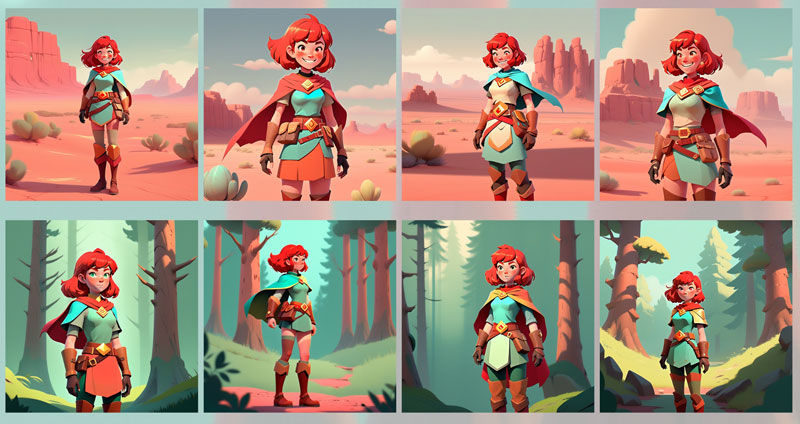
Some AI character generators provide ready-made characters, but using redundant characters might not be particularly captivating for your audience, especially if you’re a business aiming to distinguish yourself.
Additionally, relying on pre-existing AI characters can limit your ability to customize the influencer’s appearance, personality, and messaging to align with your brand’s unique identity and objectives. While there are startups dedicated to selling exclusive ready-made characters, they are frequently still under development.
It’s important to note that simply having a video or picture of a character isn’t enough to make an impact. If your goal is generating income, building your brand, or marketing your products, you’ll need more than visuals.
This is where having a story, a universe for your character, and a compelling narrative come into play. These elements make your character more attractive and help you achieve your goals.
By defining the story universe of your AI influencer, you can create a more immersive and engaging experience for your audience, ultimately driving better results for your business.
Open Source Tools
Open-source tools for AI influencer creation refer to software platforms and resources that are freely available for use, modification, and distribution. These tools allow you to explore various approaches and techniques for generating AI influencers according to your specific needs and preferences.
With open-source tools, you can customize and adapt the software to suit your unique requirements, allowing for greater creativity and innovation in your influencer marketing strategies.
Nevertheless, while options like Stable Diffusion boast powerful features, they come with complexities and demands on resources that can prove daunting for individuals lacking extensive technical know-how or access to high-performance hardware.

Based on a report by Influencer Marketing Hub, 77.4% of users faced technical challenges while using AI influencer software.
Moreover, alternatives such as Fooocus, while providing options for AI influencer creation, may lack the seamless integration and robust functionality of more sophisticated platforms. While these tools offer pathways for experimentation, their efficacy and ease of use may pale compared to premium solutions.
Although open-source tools for AI influencer creation can offer avenues for innovation, the journey may be riddled with challenges and inefficiencies. Balancing the benefits of flexibility with the practicalities of execution is critical to navigating this complex landscape and achieving your marketing objectives.
Crafting High-Quality 3D Characters
Designing 3D characters involves using specialized software tools such as Blender or Maya to create lifelike and visually compelling digital avatars. In this process, you can sculpt characters with high-quality features and realistic attributes, paying meticulous attention to detail to ensure authenticity and engagement.
With 3D character design, you can explore various gestures and body movements to convey personality and emotion effectively. Additionally, you may utilize motion capture technology to capture real-world movements and translate them into fluid animations for your AI influencer.
Nevertheless, animating the 3D character presents its own set of challenges. Tasks such as motion capture require specialized equipment and technical expertise to capture realistic movements and expressions.
Although mastering this method can help you create truly unique and compelling AI influencers that resonate with your audience, it comes with significant complexities that require patience, skill, and resources to overcome.
The diverse approaches to creating AI virtual influencers offer businesses a range of options to explore in their marketing strategies. Each method has its own strengths and limitations. So, assessing your goals, resources, and expertise is essential to find the best approach for integrating AI influencers into your marketing initiatives.
However, professional agencies often emerge as the most efficient choice for several reasons. These agencies have specialized expertise and provide comprehensive support throughout the influencer creation process. With a skilled and knowledgeable team, they offer a seamless end-to-end solution tailored to your brand’s needs.
They possess in-depth knowledge of industry trends, advanced tools, and techniques to ensure your AI influencers are perfectly crafted and aligned with your brand’s objectives.
Furthermore, agencies offer ongoing guidance and support to help you navigate any challenges that may arise. This continuous assistance enables you to optimize the results of your influencer marketing campaigns and achieve optimal results for your brand.
How much does it cost to create a virtual influencer?
The cost of creating an AI virtual influencer can vary significantly depending on several factors, including the complexity of the design, the level of realism desired, the expertise of the team involved, and the intended usage of the virtual influencer. Here are some cost considerations to keep in mind:
Open Source Tools
Open-source tools like Blender offer free 3D modeling and animation capabilities, eliminating the need for costly licenses. Software such as GIMP and Krita provide robust options for texturing and material creation without licensing fees.
While open-source tools are affordable, they might not offer the customization and expertise needed to create truly unique virtual influencers. By working with an animation studio, you can get professional advice and special skills to make your virtual influencer stand out.
Professional Animation Studios
Creating an AI virtual influencer through an animation studio means using specific talents and resources to make it unique and top-notch. Animation studios offer custom solutions tailored to clients’ specific needs, ensuring uniqueness and high-quality results.
While the price varies depending on factors such as complexity, animation studios provide comprehensive services, including concept development, character design, animation production, voice acting, and sound design. Despite the higher upfront investment, working with an animation studio is the best option for those seeking something truly unique.
Conclusion
AI virtual influencers offer a novel and exciting approach to expanding your online presence and engaging with audiences innovatively. While it comes with advantages and challenges, the key is to carefully assess your goals, resources, and audience preferences to identify the most appropriate strategy for your brand.
To help you build that strategy from the ground up, the complete guide to virtual influencer marketing covers everything you need to know.
Whether you choose to create AI influencers in-house or collaborate with external partners, the goal remains the same: to create compelling, authentic content that resonates with your target audience.
As you decide to begin your journey with AI influencers, remember to stay agile and adaptable, continuously evolving your approach based on feedback and market trends. By remaining responsive to the needs and preferences of your audience, you can enhance your influencer marketing strategies and produce tangible results for your business.
If you’re ready to explore the possibilities of AI influencers or have any questions about integrating them into your marketing strategy, we’re here to help. Feel free to contact us or leave a comment below; our team will gladly assist you.

Fareena
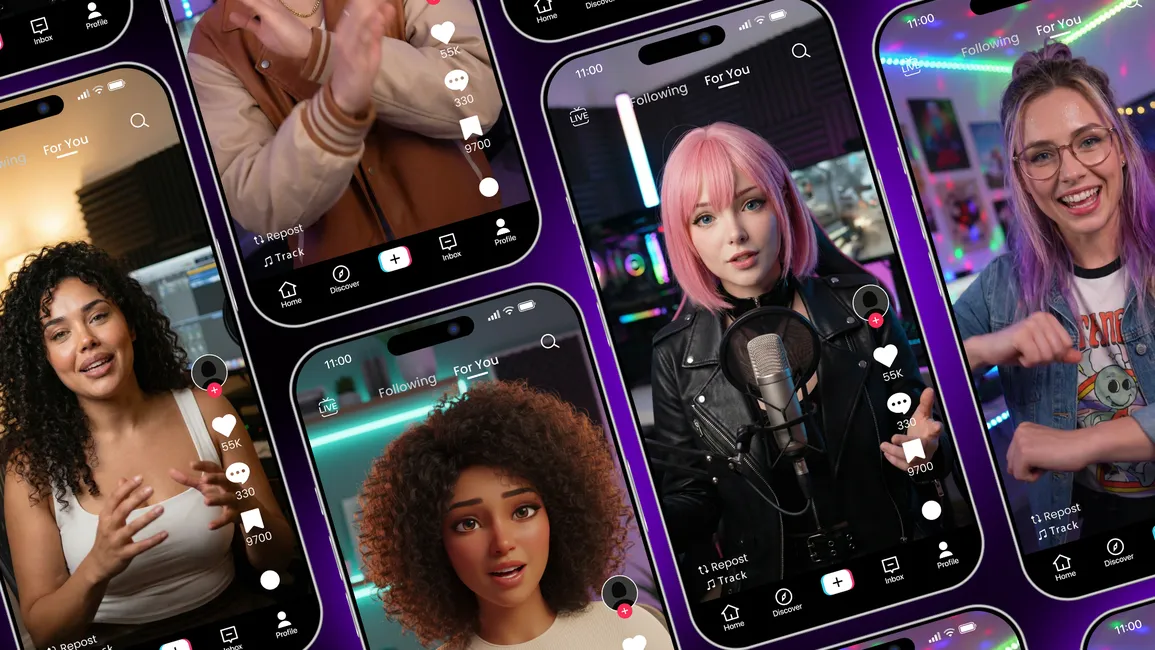


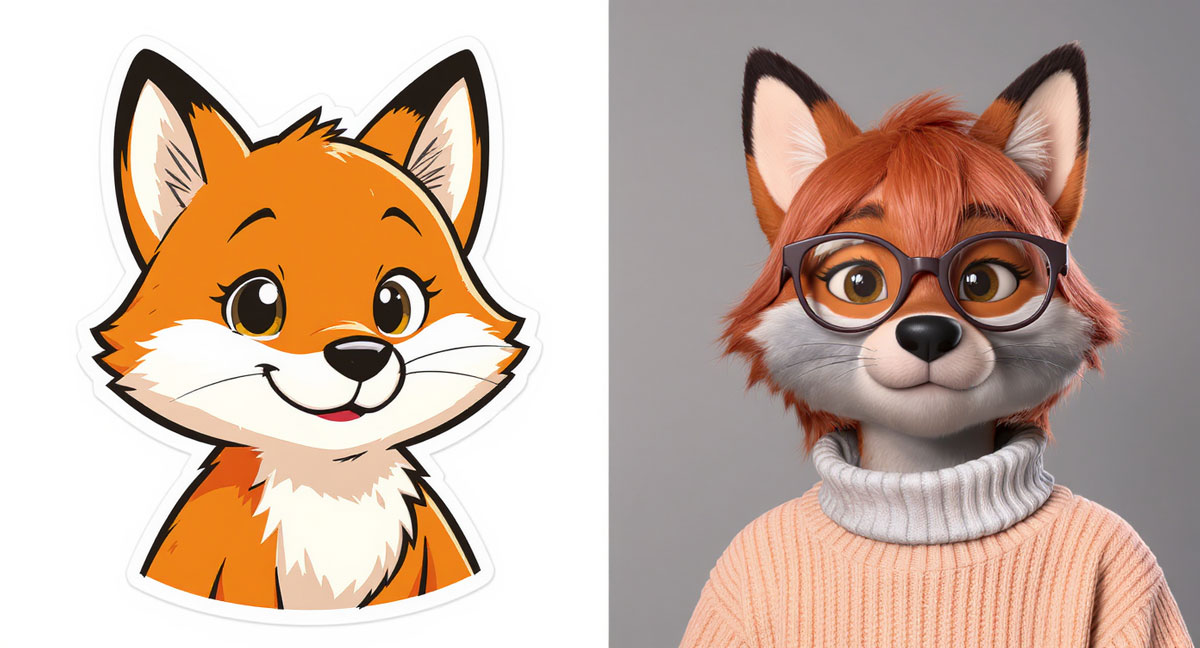
Dream Farm Agency’s blog explores how AI virtual influencers are transforming digital marketing. Fascinating insights await!
Absolutely! Dream Farm Agency, as a leading AI virtual influencers agency, offers incredible insights into how AI is transforming digital marketing.
Great insights on AI virtual influencers! Excited to see how they transform marketing!
Great point! AI virtual influencers are reshaping marketing in exciting ways. For a closer look at some of the most impactful ones, check out this insightful article: Top Virtual Influencers .
What do you think are the key factors to consider when creating a successful AI influencer that resonates with audiences?
Key factors include defining a relatable personality, aligning with target audience values, ensuring consistent and authentic content, leveraging advanced AI for realistic interactions, and maintaining a strong visual identity.